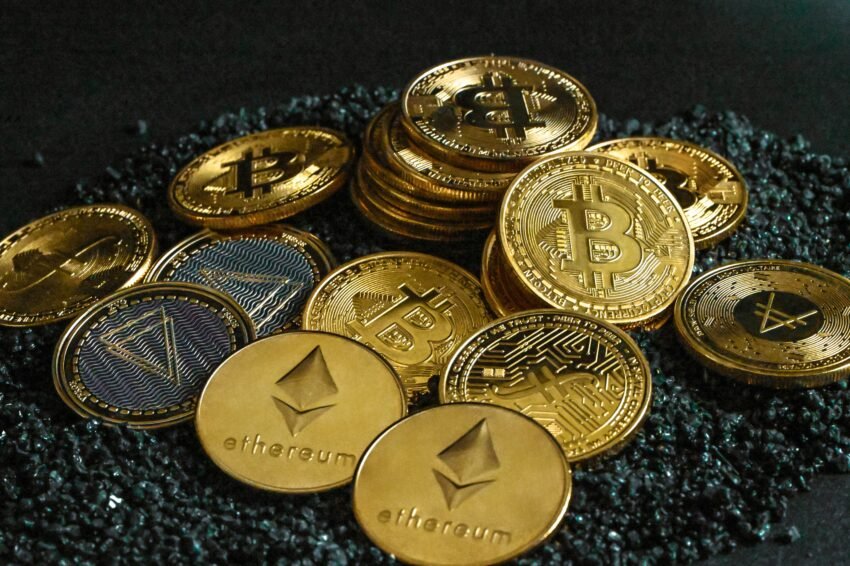What Is Currency Debasement?
Currency debasement refers to the lowering of the value of a currency. It is primarily associated with coins made from precious metals, such as gold and silver, mixing these precious metals with inferior metals. Debasement can impact inflation and government financial methods.
A currency is debased when the coins are made with a mix of precious metals and base metals as opposed to purely precious metals. The greater the amount of base metals added to a coin compared to precious metals, the further a currency is debased. Roman emperor Nero began debasing Roman currency around 60 AD and the German government also used the practice in the early 1920s. Debasement now occurs largely through money supply increases.
Key Takeaways
- Currency debasement is the lowering of a currency’s intrinsic value by adding base metals to coins.
- Debasement occurs when a government increases its money supply without a corresponding increase in output.
- Historically, debasement funded wars and infrastructure projects without increasing taxes.
- The Roman Empire and post-WWI Germany are notable examples of currency debasement.
- Unlike debasement, devaluation is the reduction of a currency’s value relative to others.
How Currency Debasement Works
Before paper and polymer money, currencies were metal coins, usually made of gold or silver, giving them value. Coins made from precious metals are still used today. Gold and silver bullion are commonly traded, but they aren’t primary currency forms and aren’t widely used daily.
When any form of currency that is made from a precious metal is mixed with a metal of inferior quality or value, it is said to be debased. The face value of the coins remains the same, but the intrinsic value decreases, which leads to inflation because the money is worth less.
Though gold and silver coins aren’t commonly used in modern economic times, debasement can still occur if a government prints too much money, increasing the money supply. This also leads to inflation as there is more money, but not an equal increase in output.
Important
Most currencies are fiat currencies and are not based on a precious metal. So, debasement only requires that a government print more money, or, since much money exists only in digital accounts, create more electronically.
Why Governments Debase Their Currency
Currency debasement has occurred throughout history. In ancient times, governments would debase their currency by adding a metal of lower value to the gold or silver content of the coins.
By mixing precious metals with cheaper metals, more coins of the same value could be made, expanding the money supply at a lower cost.
Governments debase currency to meet financial obligations easily or to fund infrastructure and domestic projects to boost the economy. Governments that debase their currencies believe they can meet their financial obligations more easily or have more money to spend on infrastructure and domestic spending projects to spur the economy.
Currency debasement was often used to fund wars, allowing governments to create more money without raising taxes. These short-sighted maneuvers eventually lead to economic crashes. Currency debasement also causes inflation, negatively impacting a country’s population.
Historical and Modern Examples of Currency Debasement
Roman emperor Nero began debasing Roman currency around 60 AD by reducing its silver content from 100% to 90%. Over the next 150 years, the silver content was reduced to 50%. By 265 AD, the silver content was down to 0.5%.
The German government reduced the value of the mark from around eight per U.S. dollar to 184 per U.S. dollar in the early 1920s by printing money to meet its financial obligations. The mark depreciated to 7,350 per U.S. dollar by 1922 and eventually collapsed. The currency reached 4.2 trillion marks per U.S. dollar before Germany returned to the gold standard.
Is Debasing a Currency the Same As Devaluing It?
No, debasing is not the same as devaluing a currency. Debasing a currency means reducing its intrinsic value even though the face value remains the same. Coins are debased when they are minted with precious metals, such as gold and silver, and mixed with lower quality metals. The devaluation of a currency, on the other hand, refers to a drop in the value of a currency in relation to other currencies and the decrease of its purchasing power.
How Do Governments Benefit From Debasement?
Currency debasement refers to the reduction in a currency’s intrinsic value rather than its face value. Debasement was commonly done when countries mixed low-quality metals with precious metals used to mint their coins. Debasing frees up money that the government can use for other purposes, including spending and paying off their debts.
What Does Devaluation Mean?
The term devaluation refers to the reduction in value of a currency relative to other currencies. Countries often devalue their currencies deliberately as a form of monetary policy. This makes their currencies cheaper, which can help make them more competitive in the global market. Exports commonly increase after a country devalues its currency because its goods become cheaper.
The Bottom Line
Currency debasement is the process of reducing the intrinsic value of a currency, traditionally by mixing precious metals with base metals in minted coins. It increases the money supply without increasing output, leading to inflation. Historical examples include debasement efforts by Roman emperors and how Germany used it during a period of hyperinflation.
Debasement isn’t the same as devaluation, which refers to a currency’s drop in value relative to others in the foreign exchange market to boost competitiveness.
Modern currencies are mostly fiat, so debasement can occur through excessive money printing. While governments may benefit from having more money to spend, debasement is often shortsighted and can have negative consequences for the population.







